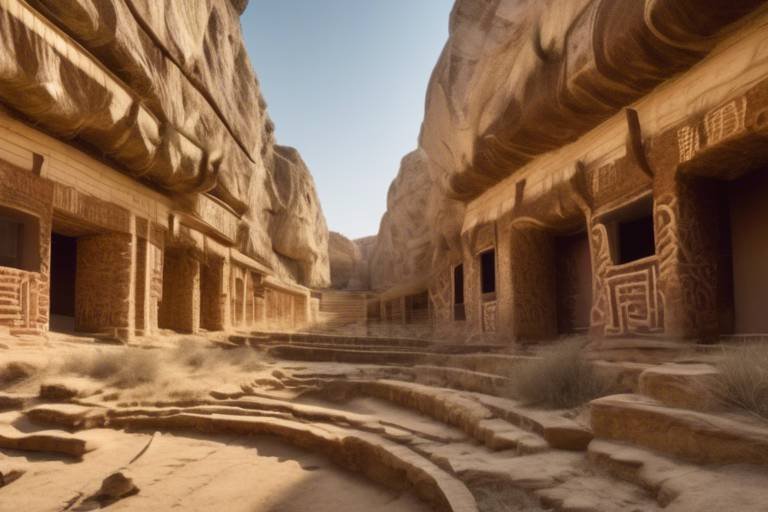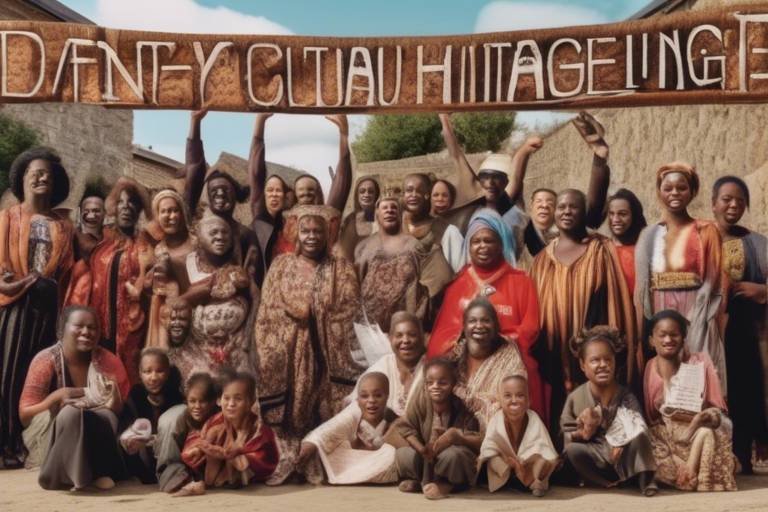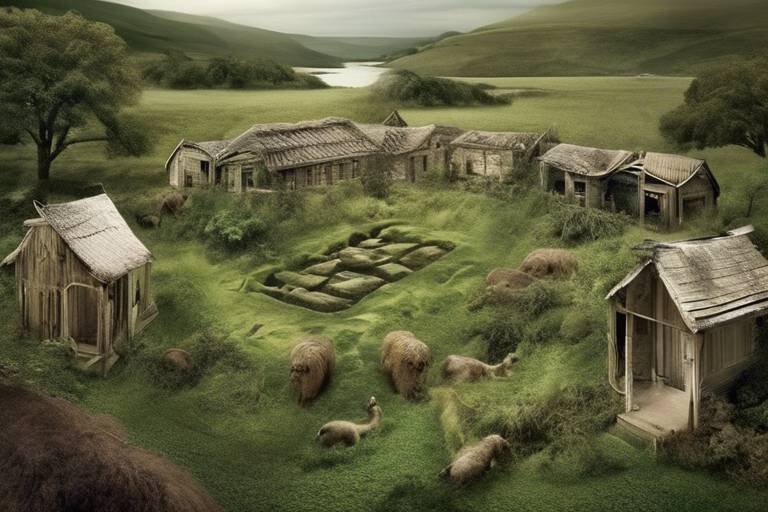The Role of NGOs in Preserving Cultural Heritage Sites
Non-Governmental Organizations (NGOs) play a crucial role in the preservation of cultural heritage sites around the world. These organizations are at the forefront of safeguarding and conserving valuable historical and cultural landmarks for the benefit of future generations. By actively engaging in various initiatives and projects, NGOs contribute significantly to the protection and promotion of our shared heritage.
NGOs are instrumental in raising awareness about the importance of cultural heritage sites through advocacy and educational campaigns. By organizing public events, workshops, and outreach programs, these organizations strive to educate the public about the significance of preserving these sites for cultural, historical, and social reasons. Through their efforts, NGOs aim to instill a sense of responsibility and appreciation for our collective heritage.
One of the key roles of NGOs is to involve local communities in the preservation process. By empowering community members to take ownership of their heritage sites, NGOs foster a sense of pride and connection to their cultural roots. Through community engagement initiatives, these organizations ensure that conservation efforts are sustainable and inclusive, benefiting both the sites themselves and the people who cherish them.
NGOs also play a vital role in fundraising and resource mobilization for cultural heritage preservation. By forming partnerships with donors, sponsors, and government agencies, these organizations secure the necessary funding and support for conservation projects. Through strategic planning and effective resource management, NGOs ensure that heritage sites receive the attention and investment they require for long-term preservation.
In addition to financial support, NGOs provide training and capacity-building programs to local communities, heritage professionals, and volunteers. By enhancing their skills in conservation practices, archaeological techniques, and site management, these capacity-building initiatives empower individuals to contribute effectively to the preservation of cultural heritage sites. Through education and training, NGOs create a network of skilled professionals dedicated to safeguarding our shared heritage.
NGOs also play a critical role in responding to emergencies and disasters that threaten cultural heritage sites. By mobilizing rapid intervention and recovery efforts, these organizations help mitigate damage and ensure the protection of at-risk sites. Through their emergency response initiatives, NGOs demonstrate their commitment to preserving cultural heritage in the face of unforeseen challenges.
Furthermore, NGOs engage in policy advocacy and legal protection to strengthen the legal frameworks and enforcement mechanisms related to cultural heritage preservation. By advocating for policies, laws, and international conventions that support heritage conservation, these organizations work to ensure the long-term protection of cultural sites. Through their advocacy efforts, NGOs seek to create a supportive environment for the sustainable management of our cultural heritage.
NGOs leverage technology and innovation in conservation efforts to document, monitor, and preserve cultural heritage sites. By utilizing tools such as drones, 3D scanning, and virtual reality, these organizations enhance their capacity to protect and showcase heritage sites. Through the integration of technology, NGOs bring new perspectives and approaches to heritage conservation, ensuring the continued relevance and accessibility of these sites.
International collaboration and partnerships are key to the success of NGO initiatives in cultural heritage preservation. By working together with governments, academia, and international organizations, NGOs build a global network of support for heritage conservation. Through collaboration and knowledge-sharing, these partnerships enable NGOs to access expertise, resources, and best practices that enhance their conservation efforts on a global scale.
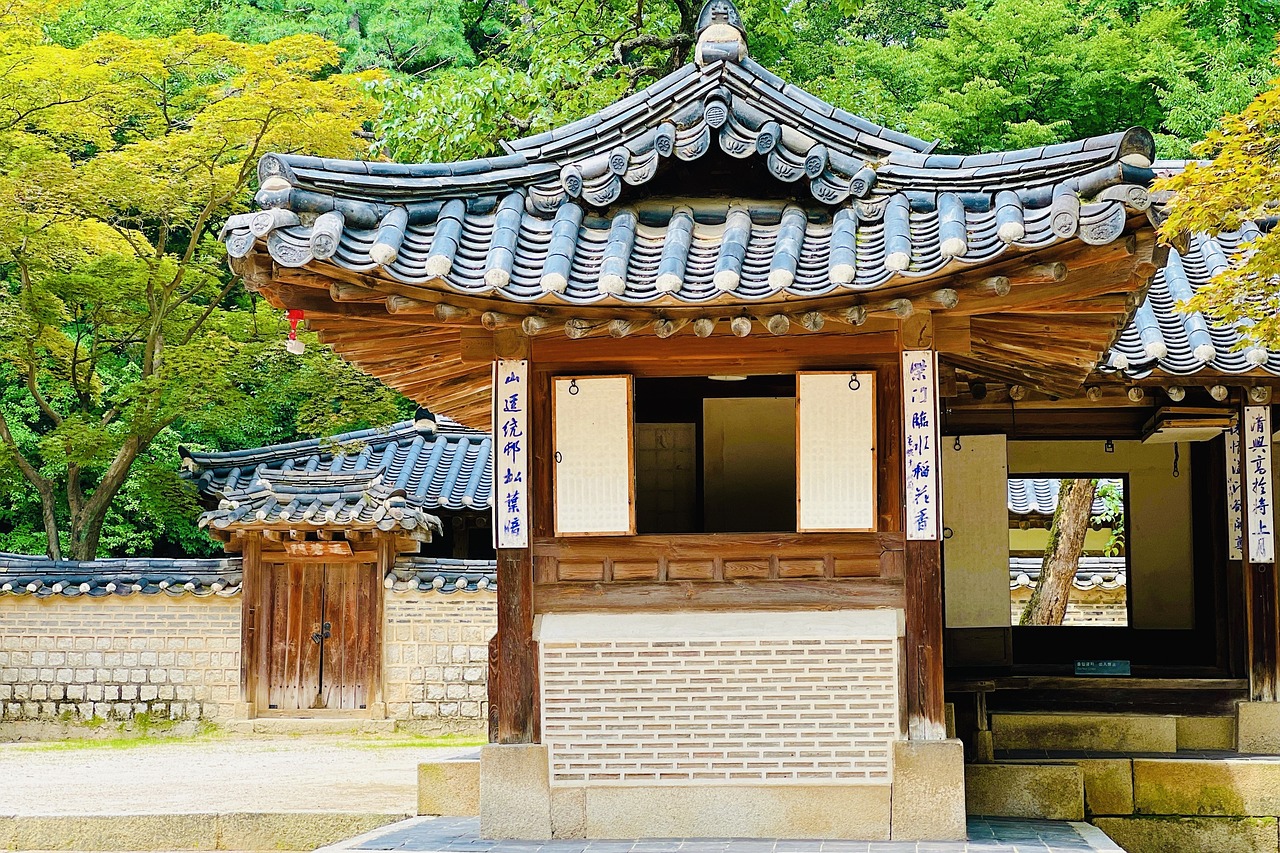
Advocacy and Awareness Campaigns
Exploring the significant impact non-governmental organizations have in safeguarding and conserving cultural heritage sites worldwide, showcasing their efforts in protecting these valuable historical and cultural landmarks for future generations.
Advocacy and awareness campaigns play a crucial role in educating the public about the importance of preserving cultural heritage sites. NGOs organize educational programs, public campaigns, and advocacy efforts to raise awareness and garner support for conservation initiatives. By highlighting the historical significance and cultural value of these sites, NGOs aim to mobilize individuals, communities, and policymakers to actively participate in safeguarding our shared heritage.

Community Engagement and Empowerment
Exploring the significant impact non-governmental organizations have in safeguarding and conserving cultural heritage sites worldwide, showcasing their efforts in protecting these valuable historical and cultural landmarks for future generations.
Community engagement plays a pivotal role in the preservation of cultural heritage sites. NGOs actively involve local communities in the conservation process, empowering them to become stewards of their own heritage. By engaging with residents, NGOs foster a sense of ownership and pride, instilling a deeper connection to the cultural significance of these sites. Through community participation, sustainable conservation practices are established, ensuring the long-term protection of these invaluable landmarks.
Furthermore, NGOs organize educational programs and workshops to educate community members about the historical and cultural importance of heritage sites. By raising awareness and promoting understanding, these organizations empower individuals to actively contribute to the preservation efforts. This engagement not only strengthens the bond between the community and its heritage but also fosters a shared responsibility for safeguarding these sites for future generations.
In addition to community engagement, NGOs provide opportunities for local residents to participate in decision-making processes regarding the management and conservation of cultural heritage sites. By involving community members in planning and implementation, NGOs empower individuals to have a voice in shaping the future of these landmarks. This inclusive approach ensures that the preservation efforts align with the needs and aspirations of the local community, promoting sustainable development and cultural continuity.
Through collaborative projects and initiatives, NGOs create a platform for community members to actively contribute their skills, knowledge, and resources to the preservation of cultural heritage sites. By harnessing the collective efforts of the community, these organizations empower individuals to take proactive steps in protecting and promoting their heritage. This grassroots engagement not only strengthens the resilience of heritage sites but also fosters a sense of unity and shared purpose among community members.

Fundraising and Resource Mobilization
Exploring the significant impact non-governmental organizations have in safeguarding and conserving cultural heritage sites worldwide, showcasing their efforts in protecting these valuable historical and cultural landmarks for future generations.
When it comes to preserving cultural heritage sites, one of the key roles played by NGOs is fundraising and resource mobilization. These organizations employ various strategies to secure the necessary funding and resources to support conservation projects and initiatives.
NGOs often form partnerships with donors, corporate sponsors, and government agencies to finance preservation efforts. By leveraging these collaborations, NGOs can access the financial support needed to undertake conservation activities, conduct research, and implement sustainable management practices.
Moreover, fundraising events, online campaigns, and crowdfunding platforms are utilized by NGOs to engage the public and raise awareness about the importance of preserving cultural heritage sites. These initiatives not only generate financial contributions but also help in building a community of supporters dedicated to heritage conservation.
Additionally, NGOs focus on resource mobilization by tapping into the expertise of professionals in various fields such as architecture, archaeology, and conservation. By assembling a multidisciplinary team, NGOs can effectively plan and execute conservation projects, ensuring the preservation of cultural heritage sites for future generations.

Capacity Building and Training
Capacity building and training play a crucial role in the preservation of cultural heritage sites, equipping individuals with the necessary skills and knowledge to effectively conserve these invaluable landmarks. Non-governmental organizations (NGOs) are at the forefront of providing training programs that empower local communities, heritage professionals, and volunteers in heritage conservation practices. Through workshops, seminars, and hands-on training sessions, NGOs enhance the capacity of individuals to understand the significance of cultural heritage sites and implement sustainable conservation methods.
Furthermore, NGOs collaborate with experts in archaeology, site management, and conservation to offer specialized training that covers a wide range of topics, including documentation techniques, preservation ethics, and risk assessment. By investing in the education and skill development of stakeholders, NGOs ensure that heritage sites are managed and protected effectively for future generations to appreciate and enjoy.

Emergency Response and Disaster Management
Exploring the significant impact non-governmental organizations have in safeguarding and conserving cultural heritage sites worldwide, showcasing their efforts in protecting these valuable historical and cultural landmarks for future generations.
When disasters strike, cultural heritage sites are often at risk of irreversible damage. NGOs play a crucial role in swiftly responding to emergencies, whether caused by natural disasters or conflicts, to ensure the protection and preservation of these sites. Through rapid intervention and strategic disaster management plans, NGOs mobilize resources and expertise to mitigate the impact of disasters on cultural heritage.
Imagine a historic temple threatened by a sudden flood or a war-torn city with ancient ruins in danger of destruction. NGOs act as the first line of defense, coordinating rescue missions, securing vulnerable artifacts, and implementing recovery efforts to salvage what remains. Their quick response and effective disaster management strategies are essential in safeguarding these irreplaceable cultural treasures.
Utilizing advanced technology and innovative methods, NGOs employ drones for aerial surveys to assess damage, 3D scanning to digitally preserve artifacts, and virtual reality to reconstruct heritage sites. These tools not only aid in emergency response but also contribute to long-term conservation efforts by documenting and monitoring the condition of cultural heritage sites.
Collaboration with local authorities, heritage experts, and volunteers is key in ensuring a coordinated and efficient response to emergencies. By training individuals in emergency protocols and disaster preparedness, NGOs empower communities to actively participate in safeguarding their cultural heritage. Through collective efforts and swift action, the impact of disasters on cultural heritage sites can be minimized, preserving these invaluable pieces of history for future generations.
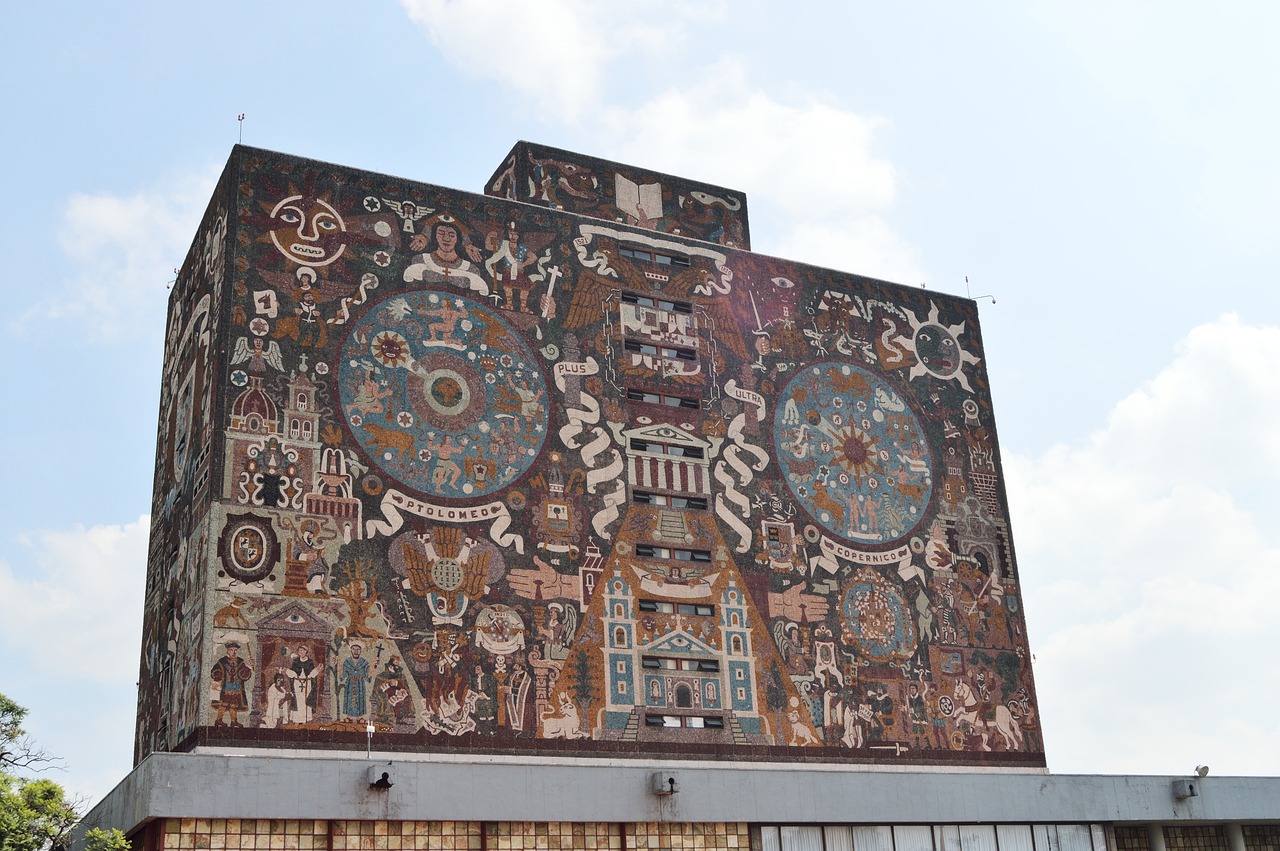
Policy Advocacy and Legal Protection
Policy advocacy and legal protection play a crucial role in the preservation of cultural heritage sites by non-governmental organizations (NGOs). These organizations actively engage in advocating for the implementation of policies, laws, and international agreements that aim to safeguard and conserve heritage sites for future generations. By lobbying governments and participating in decision-making processes, NGOs work towards creating stronger legal frameworks and enforcement mechanisms to ensure the protection of these valuable cultural landmarks.
NGOs often collaborate with legal experts, heritage professionals, and policymakers to draft and promote legislation that addresses the specific needs of cultural heritage preservation. Through research, analysis, and advocacy campaigns, these organizations strive to raise awareness about the importance of legal protection for heritage sites and the consequences of neglect or destruction. By highlighting the significance of cultural heritage in national and international contexts, NGOs seek to influence public opinion and policy decisions that impact heritage conservation.
In addition to advocacy efforts, NGOs provide legal assistance and expertise to local communities and authorities involved in heritage preservation. By offering guidance on legal procedures, property rights, and dispute resolution, these organizations empower stakeholders to navigate the complex legal landscape surrounding heritage sites. Furthermore, NGOs collaborate with law enforcement agencies and judicial bodies to ensure the enforcement of existing laws and regulations aimed at protecting cultural heritage from illicit activities such as looting, vandalism, and trafficking.
Moreover, NGOs engage in international advocacy initiatives to promote the ratification and implementation of conventions and treaties that establish standards for the protection of cultural heritage on a global scale. By participating in forums, conferences, and diplomatic negotiations, these organizations contribute to shaping the international legal framework for heritage preservation and fostering cooperation among countries to address transnational challenges.
Through their advocacy work and legal expertise, NGOs play a vital role in safeguarding cultural heritage sites from threats such as urban development, armed conflict, climate change, and natural disasters. By advocating for the integration of heritage protection into sustainable development policies and disaster risk management strategies, these organizations strive to ensure the resilience and longevity of heritage sites for future generations to cherish and enjoy.

Technology and Innovation in Conservation
In the realm of cultural heritage preservation, technology plays a pivotal role in revolutionizing conservation efforts. Non-governmental organizations (NGOs) are at the forefront of embracing innovative technologies to document, monitor, and safeguard cultural heritage sites from the ravages of time and human activities. One of the groundbreaking technologies utilized by NGOs is drones. These unmanned aerial vehicles enable high-resolution aerial surveys, providing detailed imagery and data for mapping and monitoring heritage sites with precision. By employing drones, NGOs can access hard-to-reach areas and conduct thorough assessments without causing any physical harm to the sites.
Furthermore, 3D scanning technology has emerged as a game-changer in the conservation field. NGOs leverage advanced scanning techniques to create digital replicas of heritage structures, artifacts, and landscapes. This digital documentation not only aids in preservation efforts but also serves as a valuable resource for research, education, and virtual tours. Through 3D scanning, NGOs can capture intricate details of cultural heritage sites, allowing for in-depth analysis and restoration planning without the need for physical contact or invasive procedures.
Virtual reality (VR) is another innovative tool harnessed by NGOs to enhance conservation practices. By immersing stakeholders in realistic virtual environments, VR technology enables individuals to experience heritage sites in a compelling and interactive manner. NGOs leverage VR to create immersive tours, educational programs, and exhibitions, fostering greater public engagement and appreciation for cultural heritage. This immersive approach not only preserves the essence of heritage sites but also transcends geographical boundaries, making cultural heritage accessible to a global audience.
Moreover, the integration of Geographic Information Systems (GIS) in conservation efforts has proven instrumental in spatial analysis, mapping, and monitoring of heritage sites. NGOs use GIS technology to overlay diverse data sets, such as historical maps, archaeological surveys, and environmental factors, to gain comprehensive insights into the landscape and its cultural significance. By harnessing GIS, NGOs can make informed decisions regarding site management, risk assessment, and conservation planning, ensuring the long-term preservation of cultural heritage for future generations.

International Collaboration and Partnerships
Exploring the significant impact non-governmental organizations have in safeguarding and conserving cultural heritage sites worldwide, showcasing their efforts in protecting these valuable historical and cultural landmarks for future generations.
Collaboration and partnerships play a crucial role in the preservation of cultural heritage sites, transcending borders and uniting diverse stakeholders in a shared mission. NGOs work hand in hand with governments, academic institutions, and international organizations to create a global network dedicated to safeguarding our shared heritage.
Through these partnerships, knowledge and expertise are exchanged, best practices are shared, and resources are pooled to support conservation initiatives on a larger scale. By fostering collaboration, NGOs can amplify their impact and reach, ensuring that cultural heritage sites are protected and preserved for future generations.
International partnerships also facilitate the implementation of joint projects and initiatives that require collective action and coordination across different regions. By working together, organizations can leverage each other's strengths and capabilities to address complex challenges and promote sustainable conservation practices.
Moreover, collaboration on an international level enables the sharing of technological advancements and innovative approaches to conservation. By embracing digital tools, such as 3D scanning and virtual reality, NGOs can enhance their conservation efforts and documentation processes, ensuring the long-term preservation of cultural heritage sites.
Ultimately, international collaboration and partnerships are essential in creating a unified front to protect cultural heritage sites from threats such as climate change, urban development, and looting. By joining forces, NGOs can advocate for stronger policies, mobilize resources, and implement effective conservation strategies that transcend geographical boundaries and cultural differences.
Frequently Asked Questions
- What is the role of NGOs in preserving cultural heritage sites?
NGOs play a crucial role in safeguarding and conserving cultural heritage sites worldwide. They advocate for the importance of these sites, engage local communities, raise funds for preservation projects, provide training, respond to emergencies, advocate for policies, and leverage technology for conservation efforts.
- How do NGOs raise awareness about cultural heritage sites?
NGOs raise awareness through educational programs, public campaigns, and advocacy efforts. They aim to garner support from the public and stakeholders to promote the significance of cultural heritage sites and the need for their preservation for future generations.
- What is the importance of community engagement in heritage preservation?
Community engagement is vital in heritage preservation as it empowers local communities to take ownership of their heritage sites. By involving communities in the preservation process, NGOs foster a sense of pride, ensure sustainable conservation practices, and contribute to the long-term protection of cultural landmarks.
- How do NGOs secure funding for conservation projects?
NGOs secure funding through partnerships with donors, corporate sponsors, and government agencies. They also engage in resource mobilization efforts to finance conservation projects, ensuring the sustainability of preservation initiatives for cultural heritage sites.
- What role do NGOs play in responding to emergencies threatening heritage sites?
NGOs play a critical role in emergency response and disaster management for cultural heritage sites. In times of crises such as natural disasters or conflicts, NGOs mobilize rapid intervention efforts to mitigate damage, protect sites, and facilitate recovery to preserve the historical and cultural significance of these landmarks.


